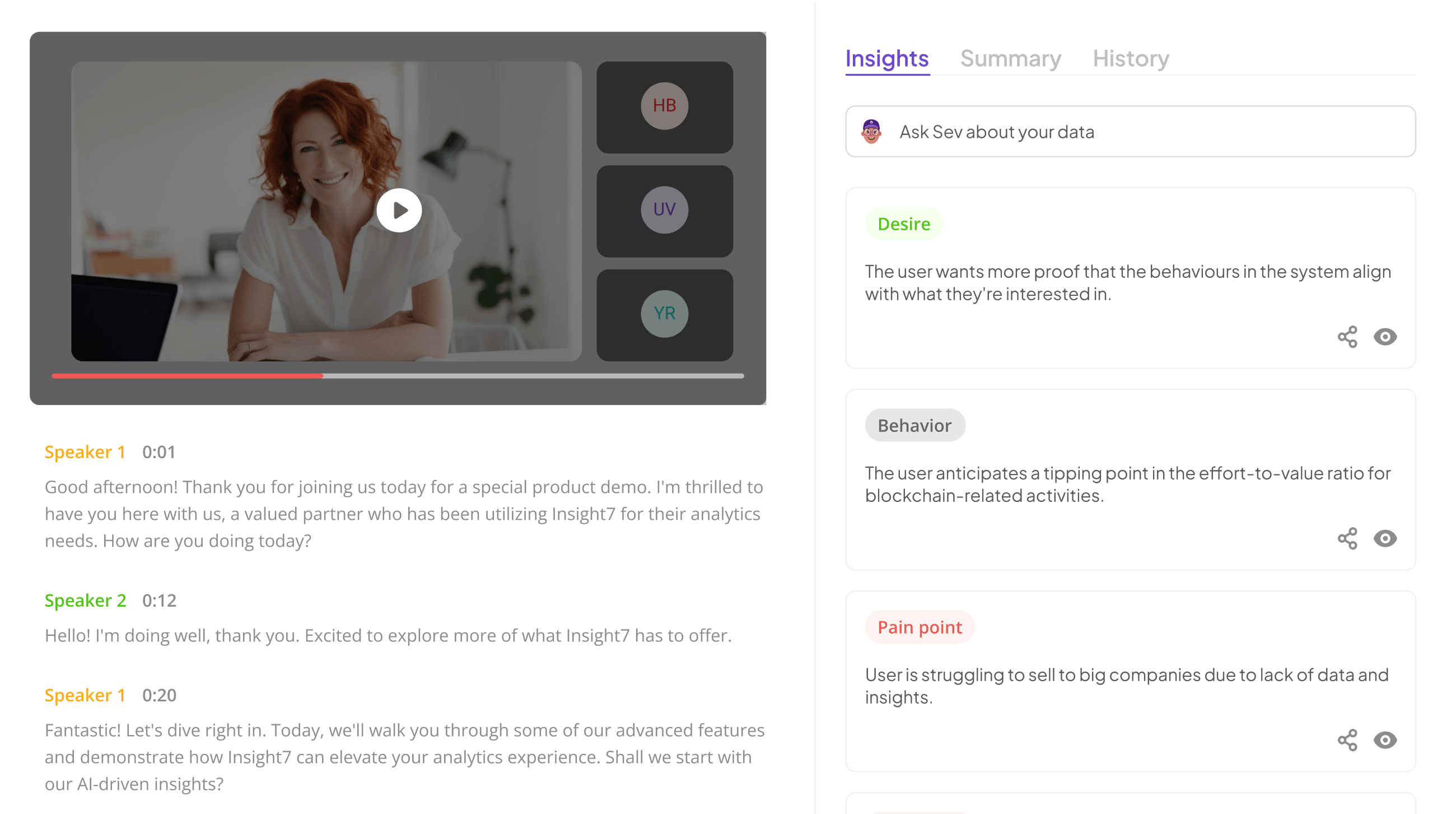Contact Center Call Coaching ROI Calculator
-
Kehinde Fatosa
- 10 min read
Most contact center leaders dramatically underestimate the true cost of manual QA. They account for analyst salaries and software licenses, but miss the hidden costs: compliance risk in unreviewed calls, opportunity costs from delayed coaching, and the productivity drain of reviewing just 3-7% of interactions.
Here’s the reality: If you’re reviewing 5% of calls, you’re flying blind on the other 95%. And that blind spot is expensive.
This post provides a framework for calculating the total cost of manual QA, and what fixing it could mean for your organization.
The Three Cost Categories Leaders Miss
The Visible Costs
These line items show up on your P&L:
- QA analyst salaries and benefits
- QA software licenses
- Management overhead
- Training and development
Most leaders stop here. That’s a mistake.
The Hidden Costs
Compliance Gaps
When you review only 5% of calls, 95% of potential violations go undetected. Industry research shows centers reviewing less than 10% of calls have significantly higher regulatory incident rates.
If you’re in a regulated industry (financial services, healthcare, insurance), a single undetected violation during an audit can result in substantial penalties, depending on severity and duration.
QA Analyst Turnover
Manual call review is repetitive work: listen to a call, fill out a form, repeat 20-30 times daily. This leads to burnout and higher turnover in QA roles.
The replacement cost includes recruiting fees, training time, productivity ramp, and institutional knowledge loss. Multiply this across multiple annual departures and the cost compounds.
Delayed Feedback Loops
Manual reviews typically take several days to complete. Research shows feedback effectiveness drops significantly after 48 hours. By the time agents receive coaching, the context is lost and the impact is minimal.
The Opportunity Costs
Coaching Opportunities Lost
Reviewing 5% of calls means missing 95% of coaching moments:
- Excellent performance that goes unrecognized
- Struggling agents making the same mistakes repeatedly
- Top performer techniques that could be replicated
- Emerging skill gaps that could be addressed early
Revenue Leakage
Poor sales technique, missed upsell opportunities, and customer experience issues compound when undetected. An agent might be missing opportunities on most of their calls, but if those calls aren’t reviewed, the pattern continues.
Competitive Disadvantage
Competitors with automated QA review 100% of calls. They identify and fix problems faster, coach more effectively, and improve customer experience more consistently. The performance gap compounds over time.
Analyze & Evaluate Calls. At Scale.

A Framework for Calculating Your True QA Costs
Step 1: Calculate Your Manual QA Labor Costs
What You Need:
- Team size (number of agents)
- Average calls per agent per week
- % of calls currently reviewed
- Average time to manually review one call
- QA analyst hourly rate (fully loaded)
The Formula
Weekly QA Hours = (Team Size × Calls per Agent × % Reviewed × Review Time in Minutes) ÷ 60
Annual QA Labor Cost = Weekly QA Hours × Hourly Rate × 52 weeks
Example (100-agent center):
100 agents × 50 calls/week × 5% reviewed × 20 minutes = 5,000 minutes/week
5,000 minutes ÷ 60 = 83 hours/week
83 hours × $35/hour × 52 weeks = $151,060/yearThis is your visible QA investment, what shows up in budget meetings.
Step 2: Quantify Your Compliance Risk
What You Need:
- Historical compliance incidents (last 2-3 years)
- Average cost per incident (penalties + remediation + legal)
- Current QA coverage rate
Centers reviewing less than 10% of calls have higher compliance incident rates than centers with comprehensive monitoring.
Calculate your exposure:
- How many incidents have you had?
- What did each cost in direct penalties and indirect costs (legal fees, remediation, process changes)?
- What’s the probability of future incidents at your current coverage rate?
Don’t forget reputational costs. Regulatory actions often become public, eroding customer trust and attracting media attention.
Step 3: Estimate Lost Coaching Value
When QA teams review only a small sample, agents receive feedback on a tiny fraction of their work. Research shows that frequent, personalized coaching based on comprehensive analysis drives measurable productivity improvements through:
- Faster identification of performance gaps
- More targeted, specific coaching
- Positive reinforcement of effective behaviors
- Real-time course correction
How to estimate this:
Consider your context:
- What’s your average revenue or productivity value per agent annually?
- What percentage improvement would be realistic with better coaching?
- How many agents could improve with targeted intervention?
Even modest improvements, when multiplied across your team and sustained over time, represent substantial value.
Step 4: Calculate Time-Back from Automation
The Formula:
Weekly Time Saved = Current QA Hours × Efficiency Gain %
Annual Capacity Value = Time Saved × Hourly Rate × 52 weeksIndustry data shows AI-powered call analytics typically reduce manual scoring time by 75-85%.
Example calculation:
83 hours × 80% efficiency gain = 66 hours/week saved
66 hours × $35/hour × 52 weeks = $120,120/year in reclaimed capacityThis capacity can be redirected to:
- Strategic coaching sessions
- Quality calibration
- Root cause analysis
- Customer journey mapping
- Advanced analytics
Your QA team evolves from administrative scorers to strategic business partners.
How Call Analytics Addresses the Hidden Costs of Manual QA
Analyze & Evaluate Calls. At Scale.

insight7 is an AI-powered call analytics platform designed specifically to solve the manual QA bottleneck.
Comprehensive Coverage
Insight7 automatically analyzes 100% of customer calls using natural language processing and machine learning. Every conversation is:
- Transcribed with high accuracy
- Scored against your custom evaluation criteria
- Analyzed for compliance risks, sentiment, and coaching opportunities
- Surfaced in an intuitive dashboard with actionable insights
The result: Your 5% sample becomes 100% coverage with no additional headcount.
Real-Time Analysis and Alerts
- Immediate analysis: Calls are analyzed as they happen
- Smart alerts: Compliance violations or critical moments trigger instant notifications
- Automated scoring: Eliminates hours of form-filling
- Intelligent prioritization: Surfaces calls that need human review
The result: QA teams reclaim 75-85% of their time for strategic work.
Proactive Compliance Monitoring
- Continuous monitoring: 100% of calls scanned for regulatory requirements
- Custom rule engine: Configure your specific compliance requirements
- Real-time violation alerts: Immediate notification of potential issues
- Audit-ready documentation: Complete records for regulatory inquiries
The result: Move from reactive compliance to proactive risk management.
Data-Driven, Personalized Coaching
- Individual dashboards: Each agent sees strengths, opportunities, and trends
- Specific feedback: Coaching tied to actual moments and patterns
- Top performer recognition: Identifies excellent performance automatically
- Trend identification: Spots patterns invisible in small samples
The result: Coaching becomes consistent, scalable, and measurably effective.
Rapid Implementation
Unlike traditional enterprise software requiring many months:
- Weeks 1-2: System setup and integration
- Weeks 3-4: Pilot launch with subset of team
- Weeks 5-8: Analysis and model refinement
- Weeks 9-12: Full deployment
Most customers see measurable results within 60 days.
Analyze & Evaluate Calls. At Scale.

Taking Action: What You Can Do Now
Understanding the true cost of manual QA is the first step. The second is evaluating whether your current approach aligns with your goals around compliance risk, agent development, and operational efficiency.
Ask:
On Compliance:
- Can you afford the risk of reviewing less than 10% of calls?
- How would a compliance violation impact your organization?
- Do you have visibility into regulatory risks across all interactions?
On Coaching:
- Are agents receiving timely, specific feedback?
- Can you identify and replicate top performer behaviors?
- How long does coaching take after a call?
On Operations:
- Is your QA team doing strategic work or administrative tasks?
- Can you scale your current approach as you grow?
- How does your approach compare to industry leaders?
Analyze & Evaluate Calls. At Scale.

Conclusion
Manual QA wasn’t designed for modern contact center scale and complexity. The hidden costs – compliance risk, delayed coaching, lost insights, wasted time – compound over time.
AI powered call analytics can analyze 100% of calls in real time at a fraction of the cost of scaling manual QA. The technology is mature and proven across hundreds of contact centers.
The question isn’t whether to automate. The question is when, and what the delay is costing you.







